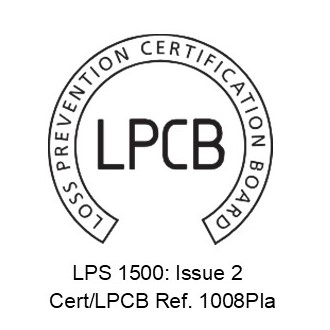Improving the Flat Roof Lifecycle
Published on 11th February, 2016
Cost considerations, the speed of installation and accessibility make flat roof construction solutions especially attractive to commercial projects large and small. But they’re not without their pitfalls.
Mike Goodhead from ISD Solutions’ Industrial Waterproofing Division explains:
“What a brilliant invention! Invariably the most cost-effective construction solution for a whole range of commercial projects, flat roofs tick all the boxes. They are also far quicker to install, and easier to inspect and maintain. There are other advantages too. That precious roof space can be utilised for external plant and other amenities, essential in city areas where space is at a premium, and they are better at absorbing heat, useful for internal warmth and energy efficiency. But despite their popularity, there are things that can go wrong and, with a bewildering choice of systems, membranes and almost daily technical innovations, getting the installation right is crucial.”
The combination of poor installation and the selection of inappropriate waterproofing materials for the building, without due regard for how the roof will be used long-term, or how the building will perform, still represent some of the most common and costly mistakes. Examples of roofs which have felt like walking on a roof-top bouncy castle, such has been the quantity of water trapped in the insulation void, and ripped membranes exposing insulation to the elements, are fortunately far less likely these days.
But we still see single ply systems occasionally used completely inappropriately on heavily trafficked areas covered in plant and M&E equipment. The wrong detailing, poor or inadequate drainage, and subsequent plant items which are literally drilled through the membrane by badly trained installers and then unchecked are sadly more common. That said, flat roofing can be done extremely successfully given the selection of the right materials, installers and designers, collaborating to achieve a long-term low maintenance solution.
Today the industry is more mature and better educated with some excellent designers working for both manufacturers and contractors, who are only too willing to help Architects and Developers. The key is to engage with a manufacturer or your selected contractor to provide advice at the earliest possible stage of the project. Offsite options for light frame construction are also available, but again getting advice at the earliest opportunity will help with the process. The selection of materials can be dependent on a huge number of factors and even the locality can make a difference.
Due attention and appropriate investment, spending a little more at this stage to spec the roof appropriately, will also pay dividends in reducing long-term maintenance and subsequent unplanned and expensive disruption. Solar gain, expansion and shrinkage, together with the elasticity of the roofing solution, must all be factored into designs and planning. The lifecycle of the building and how the roof should be performing ten or fifteen years down the line should also be considered.
Today’s flat roofing systems are essentially divided into three main groups: bitumen, metal and single ply solutions. ISD Industrial Waterproofing installs all of these. Bitumen covers mastic asphalt, built-up-felt, hot melt and coatings traditionally used for terraces, roof gardens and high trafficked areas. Metal roofing can either by a single sheet or composite panels. These panels can be perfect for warehouses or cold storage for example. The newer ones also comply with the government’s Construction strategy 2025 in providing offsite innovation. Finally, you have Single-ply systems which remain ideal for lightweight construction where the roof area is usually not trafficked.
In each group, there are a number of variables and types which can be baffling. Add to this the fact that each manufacturer has their own trade names promoting different material properties and it is not surprising that confusion can be commonplace!
Thinking about the life cycle of the roof, what it will be used for and what plant it will house can help. You and your contractor should be asking what traffic it will get. What are the expected maintenance frequencies? Is there a potential for more plant and equipment to be installed on the roof after the construction phase? During the Construction, phase are other trades being monitored when trafficking, storing or taking materials across the roof? Is the roof handed over in the correct way?
Today’s structural waterproofing systems themselves are usually proven and durable and very rarely go wrong. Faults are nearly always due to incorrect installation, poor detailing or misuse of the finished surface.
Testing and repeat testing at each stage of the construction to check the integrity of joints, seals and flashings will show up faults or potential faults before they become problems. Attempting to save money on this by reducing testing frequency isn’t a good idea indeed more is better as it costs fairly little money and can save a lot of headaches later on. Believe me, I’ve been there! Infrared thermography can also be useful during routine maintenance inspections to show up faults caused by weathering or thermal movement.
Inspections and maintenance are equally important, as factors like blistering, standing water and thermal movement must be rectified quickly. Check that your contractor has produced a maintenance plan for the roof and that the O&M Manual is complete. Ascertain that drainage is working as specified, that any construction damage has been properly repaired and that expansion joints and flashings have all been installed. With these checks in place, a flat roof should never be a leaky roof and strong collaboration and early input on design will always deliver superior results. However, you choose to exploit the extra space your roof can offer, done well it can be a great asset.
We are experts in cold storage construction, firewalls, data-centres and single envelope cladding.
Brochures
We’ve put together some brochures to help you decide on the right company to choose for your next project.









